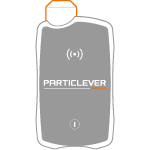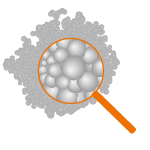Local governments


Today, measurements of atmospheric pollution are taken at fixed points spread out across large urban areas. Although this is the regulatory standard, this approach is limited, as it provides information about overall air quality but says nothing about what citizens are actually breathing in. This is because local variations in concentrations and particle types are sizable, so lifestyles and modes of travel will heavily influence actual exposure.
The issue of health within communities is significant, because some residents may be highly exposed due to their lifestyle or what neighborhood they live in.
PARTICLEVER technologies make it possible to explore a new way to measure the actual exposure of individuals. The technology's compactness and simplicity of use is such that it makes it possible to conduct unique experiments that consists of empowering volunteer citizens to measure their own exposure to particles.
Additionally, investigating nanoparticles other than combustion residues remains a little-explored area in atmospheric pollution. PARTICLEVER provides local governments and air-quality monitoring agencies with exceptional analysis capabilities.
Key questions
Real-time measurement devices only measure carbon nanoparticles, because they form the overwhelming majority. Measuring aggregate or agglomerated nanoparticles, or those which are metal-based, can only be done with high resolution electron microscopes. As such microscopes are bulky and sensitive, they cannot be positioned in fixed stations, nor used automatically without manual intervention. There is no alternative to sampling particles in order to analyze them.



